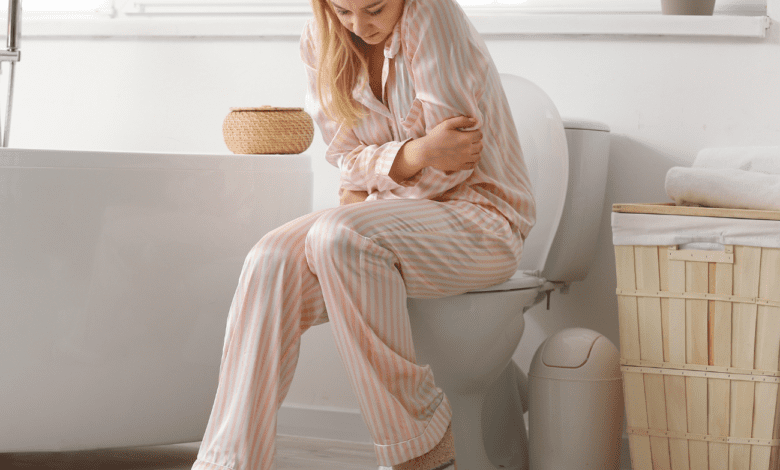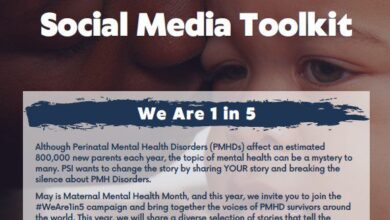Postpartum Hemorrhoids: How to Treat Them for Good

Postpartum hemorrhoids are common and affect many women through pregnancy and after birth, especially if pushing is involved. Here’s what you should know and how you can help put them at ease.
Welcoming your new baby into the world is easily one of the most life-changing experiences you can go through. However, it can also cause various physical changes that you don’t expect.
Postpartum hemorrhoids are swollen blood vessels in the rectal area which can cause pain and discomfort, hindering a mother’s overall well-being during difficult times.
We will discover everything you need to know about postpartum hemorrhoids and let you know about effective treatment options which can soothe and restore comfort for new mothers.
We aim to empower new mothers and provide them with knowledge and tools needed to overcome postpartum hemorrhoids, allowing them to fully embrace the joy of motherhood with a significant increase in their comfort level.
Medical Disclaimer: This article is for informational purposes only and is not a substitute for medical advice. Please consult your doctor or care provider for questions and additional care instructions.
What are postpartum hemorrhoids?
The formation of hemorrhoids during the postpartum stage is quite common (Studies show about 40%) and can significantly affect new mothers, depending on their severity. The good news is that while they can lead to extreme discomfort, they are relatively harmless and can be treated effectively, so you find a cure quickly.
Postpartum hemorrhoids develop from increased pressure and strain in the rectal area during childbirth, which makes the blood vessels swollen and inflamed.
Hemorrhoids can also occurs during pregnancy and proceed to the postpartum stage. These hemorrhoids are often external and visible but can also be internal.
Providing understanding and support for mothers experiencing postpartum hemorrhoids is important during this vulnerable time.
Postpartum hemorrhoids: causes and symptoms
Among the many challenges of having a new baby, postpartum hemorrhoids can add stress and frustration. Understanding of cause and symptoms of postpartum hemorrhoids is very important for knowing how to treat them and find a much needed cure.
Dealing with postpartum hemorrhoids can be overwhelming for new moms trying to navigate the many demands of motherhood. It is important to approach this issue with empathy and provide a safe place for women to voice their concerns and seek support.
Empowering them with knowledge and reminding them that they are not alone in this experience can greatly ease their physical and emotional burden.
What causes hemorrhoids after birth?
These hemorrhoids occur when the the blood vessels in the rectal area are strained during childbirth, leading to inflammation. They can also be a continuation of hemorrhoids that develop during pregnancy.
What does hemorrhoids feel like?
- Itching and burning sensations
- Pain and discomfort while sitting
- Small, tender lump near the anus
- Blood in stool or toilet bowl
Itching and burning sensations in the anal region is familiar with postpartum hemorrhoids, which causes discomfort. Pain and discomfort while sitting or moving can make the simplest tasks difficult.
Some may notice the presence of small, tender lump near the anus, which may be a physical manifestation of inflamed blood vessels. Blood in the stool is also a common symptom of postpartum hemorrhoids.


How to treat postpartum hemorrhoids for good
There are, fortunately, some accessible treatment options for postpartum hemorrhoids available at our disposal.
- Gently clean the area with warm water
- Clean the area with soft, unscented wipes
- Use ice packs or cold compresses
- Avoid straining while defecating
- Drink enough water
- Avoid spicy food
- Eat lots of fruits and vegetables
- Take regular sitz baths
- Use a topical treatment for itching
- Take anti-inflammatories for inflammation*
*If breastfeeding, consult your care provider before taking any medication.
First and foremost, keeping the area clean and minimal irritation is important. Gently cleaning the affected area with warm water using a fairy bottle after defecation and soft wipes without fragrance can help relieve and prevent further irritation.
You can also apply a cold compress or ice pack to help reduce inflammation and temporarily relieve pain. You can also invest in a “squatty potty” to help prevent wiping (thus further irritating your hemorrhoids) while using the bathroom.
Combining some diet changes can also make a big difference in reducing the symptoms of postpartum hemorrhoids. Staying hydratedavoiding spicy food, and consuming a foods rich in fiber with plenty of fruits, vegetables, and whole grains can help regulate bowel movements, reducing strain on the rectal area.


Postpartum hemorrhoids support is a must have
Epsom salts or sitz bath blends in a convenient sitz bath tray is great for finding relief and reducing inflammation.
Topical treatments such as mild witch hazel spray, hydrocortisone cream, or an all-natural hemorrhoid balm can also relieve itching and inflammation, and pain reliever such as acetaminophen and ibuprofen can help relieve and reduce inflammation.
Read next: Postpartum Digestive Issues? What You Can Do to Help Your Gut
It is important to consult your health care provider before using any medicine, especially if you are breastfeeding. For severe or persistent cases, surgery with local anesthesia may be necessary.
Mothers deserve all the support and guidance to find practical solutions to relieve their discomfort from postpartum hemorrhoids.
By having a thorough understanding of them, how to treat them, and making sure they are not alone, they can find lasting relief and focus on the endless joys and precious moments of motherhood.


Preventing future hemorrhoids
Being proactive and taking preventative measures to prevent future postpartum hemorrhoids can help mothers avoid a lot of unnecessary stress and discomfort.
Maintaining a high-fiber diet with lots of fruits, vegetables, and whole grains promotes regular bowel movements and prevents constipation, reducing strain in the rectal area.
Staying adequately hydrated and engage in gentle exercise, such as walking, to promote blood circulation can also help a lot. Finally, keep the site clean, using soft wipes, and avoiding torture during bowel movements can help significantly reduce the risk of developing hemorrhoids in the future.
By incorporating these preventative measures, moms can focus more on themselves and cherish the sweet moments of motherhood without the discomfort of recurring hemorrhoids.
Embracing motherhood through effective treatment of postpartum hemorrhoids
Being prepared and aware how to treat postpartum hemorrhoids can be very helpful so that you can begin to heal and avoid as much discomfort as possible.
By understanding the causes, symptoms, different treatment options, and preventive measures, mothers can discover practical solutions to relieve pain and restore their health. It’s important to approach this topic with empathy so that new moms feel safe seeking the support they need.
By empowering them as much as possible, we can help them navigate the challenges of postpartum hemorrhoids so they can focus on fully embracing the many joys of motherhood.






